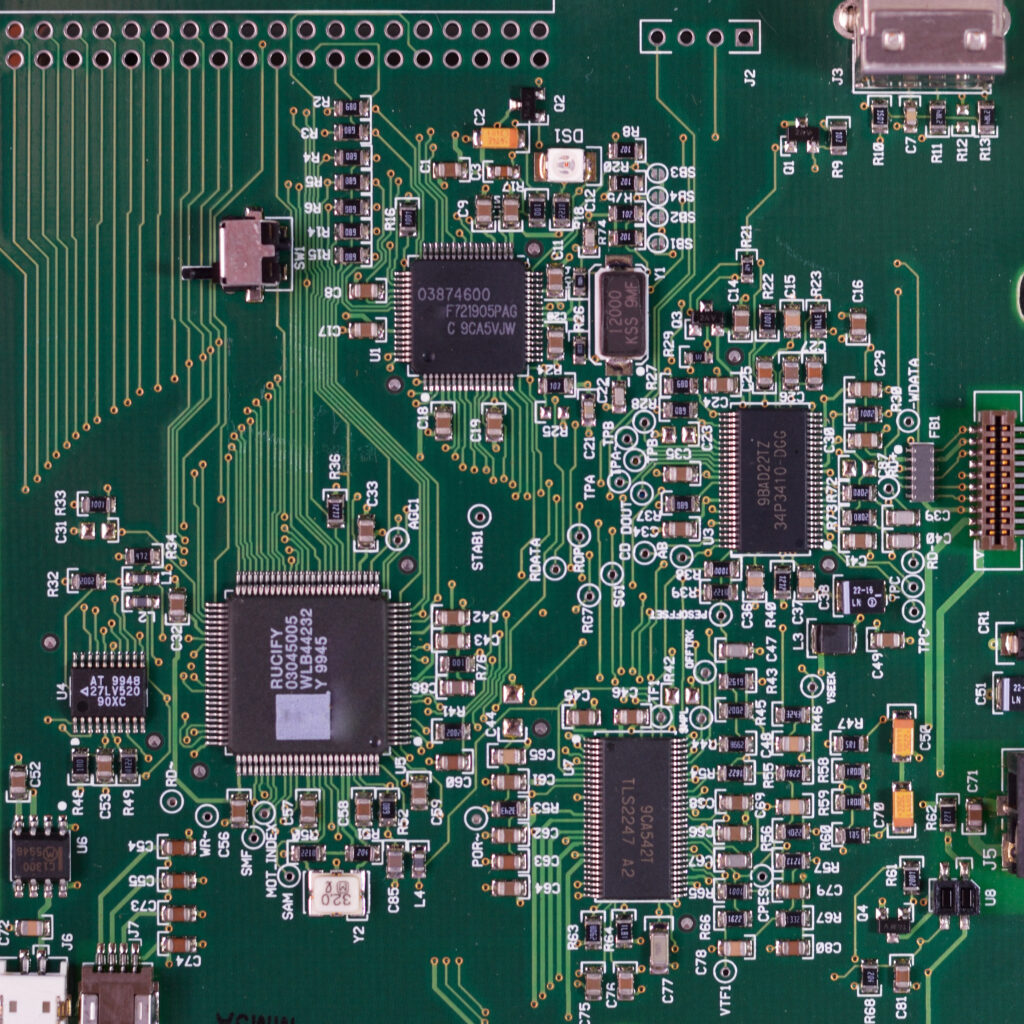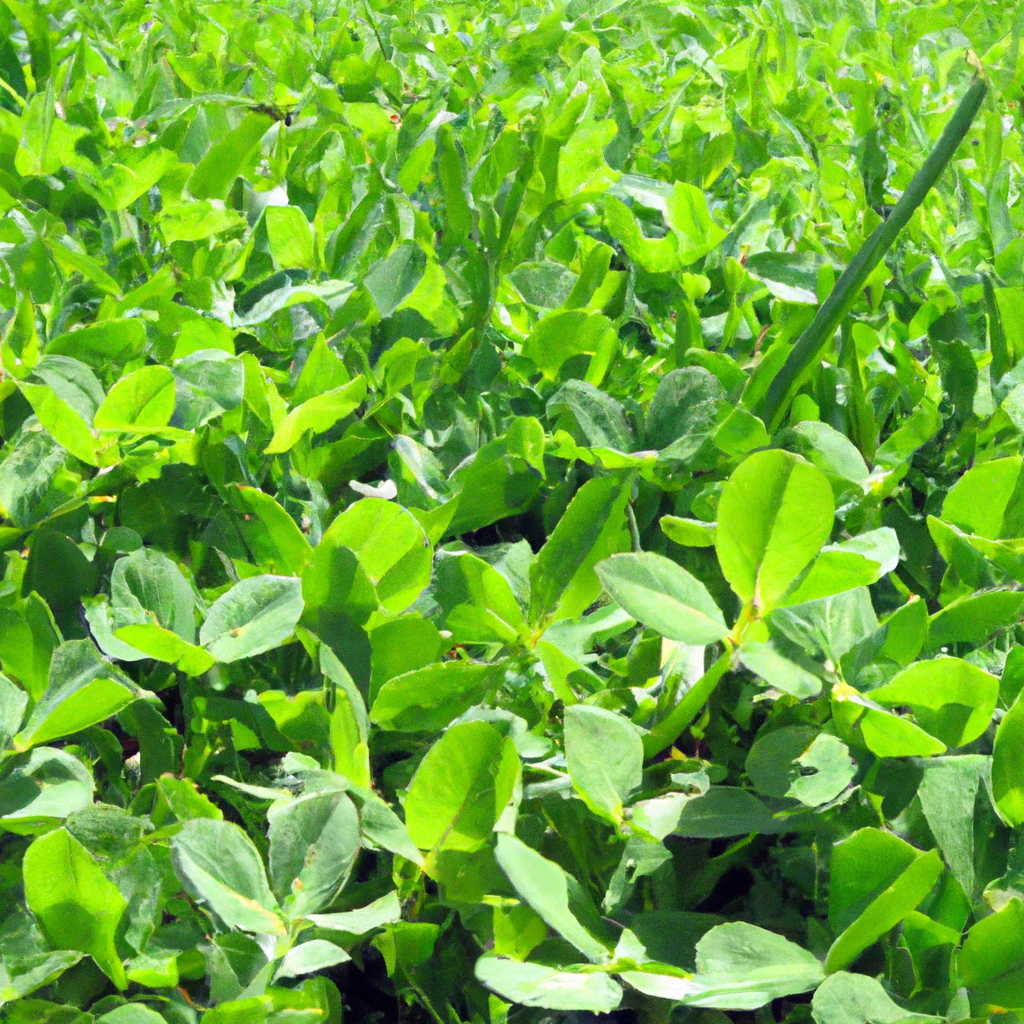Are you tired of spending countless hours maintaining your lawn, only to see it become dull and patchy? Look no further! In this comprehensive guide, you will discover the amazing benefits and uses of Micro Clover Grass Seed Mix. This innovative seed mix not only enhances the beauty of your lawn but also provides numerous environmental advantages. Say goodbye to frequent watering, excessive fertilizing, and constant weeding. Micro Clover Grass Seed Mix is your ultimate solution for achieving a lush and vibrant lawn with minimal effort.

What is Micro Clover Grass Seed Mix?
Definition and characteristics
Micro Clover Grass Seed Mix is a unique blend of grass seeds that includes a variety of dwarf clover called micro clover. This type of grass seed mix is specifically designed to enhance the quality and biodiversity of lawns and other landscaping areas. When mature, micro clover forms a dense and low-growing cover, providing all the benefits of a traditional lawn while requiring less maintenance and resources.
Composition and varieties
Micro Clover Grass Seed Mix is composed of several types of grass seeds, including fine fescue, perennial ryegrass, and micro clover. The specific varieties and proportions may vary depending on the brand or supplier. Micro clover, the key component of this mix, is a type of dwarf clover that thrives in lawns and other grassy areas. It has smaller leaves compared to traditional clover varieties, enabling it to blend seamlessly with the grass and create a uniform appearance.
Benefits of Micro Clover Grass Seed Mix
Improves soil quality
Micro Clover Grass Seed Mix has a remarkable ability to improve soil quality. The micro clover plants have nodules on their roots that contain nitrogen-fixing bacteria. These bacteria have a symbiotic relationship with the plants, taking nitrogen from the air and converting it into a form that is usable by the plants. As a result, the soil becomes enriched with nitrogen, a crucial nutrient for plant growth. This natural nitrogen fixation process reduces the need for synthetic fertilizers and promotes healthier and greener lawns.
Enhances biodiversity
Another significant benefit of Micro Clover Grass Seed Mix is its ability to enhance biodiversity. The inclusion of micro clover in the mix provides a food source for beneficial insects, such as bees and butterflies. These insects play a vital role in pollination and contribute to the overall health of ecosystems. By attracting pollinators, micro clover grass seed mix helps support and promote biodiversity in your yard or landscaping area.
Reduced need for fertilizers
Due to the nitrogen-fixing properties of micro clover, lawns and other areas planted with Micro Clover Grass Seed Mix require fewer fertilizers. The nitrogen produced by the micro clover plants is released slowly over time, providing a steady and consistent supply of nutrients for the grass and other plants. This not only reduces the cost and effort associated with fertilizing but also decreases the risk of nutrient runoff, which can contribute to water pollution.
Drought-tolerant
Micro Clover Grass Seed Mix possesses excellent drought tolerance capabilities. The deep root system of micro clover allows it to access moisture from deeper layers of the soil, making it more resilient during dry periods. Additionally, the dense cover created by micro clover helps reduce water loss through evaporation, further conserving water. With Micro Clover Grass Seed Mix, you can enjoy a lush and green lawn even in regions prone to drought.
Low maintenance
One of the greatest advantages of Micro Clover Grass Seed Mix is its low maintenance requirements. Unlike traditional lawns that demand regular mowing, watering, and fertilizing, lawns planted with micro clover require significantly less attention. Micro clover is a slow-growing plant, meaning less frequent mowing is needed to maintain an appropriate lawn height. It also has a natural tolerance to various pests and diseases, reducing the need for chemical treatments. With Micro Clover Grass Seed Mix, you can spend less time on lawn care and more time enjoying your outdoor space.
Uses of Micro Clover Grass Seed Mix
Lawn applications
Micro Clover Grass Seed Mix is ideal for creating attractive and environmentally friendly lawns. Whether you’re renovating an existing lawn or starting from scratch, this grass seed mix can transform your yard into a lush and vibrant space. The micro clover, blended with the other grass varieties, creates a durable turf that can withstand foot traffic while providing a visually pleasing and eco-friendly alternative to traditional grass lawns.
Erosion control
The dense ground cover formed by micro clover in Micro Clover Grass Seed Mix makes it an excellent choice for erosion control. The extensive root system of micro clover helps stabilize the soil, preventing erosion caused by heavy rainfall or wind. Whether on sloped terrain or areas prone to erosion, planting Micro Clover Grass Seed Mix can provide an effective and natural solution for controlling erosion and maintaining soil integrity.
Livestock forage
Micro Clover Grass Seed Mix can also be used as a valuable forage crop for livestock. The high nutritional value of micro clover makes it a suitable feed option for grazing animals, such as cattle, horses, and sheep. Its nitrogen-fixing ability not only enriches the soil but also contributes to the health and quality of the forage. By incorporating Micro Clover Grass Seed Mix into pastures or grazing areas, farmers and ranchers can provide their livestock with a nutritious and sustainable feed source.
Cover crop
Another practical use of Micro Clover Grass Seed Mix is as a cover crop. Cover crops are grown primarily to protect and improve the soil, rather than for harvesting. Micro clover, with its nitrogen-fixing properties, acts as a natural fertilizer, enriching the soil with nitrogen while preventing soil erosion. Planting Micro Clover Grass Seed Mix as a cover crop can help improve soil health, suppress weed growth, and enhance the overall productivity of the land.
Urban landscaping
Micro Clover Grass Seed Mix is also well-suited for urban landscaping applications. Whether in parks, golf courses, or residential areas, the low-maintenance nature of Micro Clover Grass Seed Mix makes it an attractive option for enhancing outdoor spaces. Urban landscaping often faces limitations in resources and water availability, making micro clover an ideal choice. Its drought tolerance, low fertilizer requirements, and ability to attract pollinators make Micro Clover Grass Seed Mix a sustainable and visually appealing option for urban green spaces.
How to Plant Micro Clover Grass Seed Mix
Preparing the soil
Before sowing Micro Clover Grass Seed Mix, it’s important to properly prepare the soil. Start by removing any existing vegetation, such as weeds or old grass. This can be done by manually pulling them out or using a herbicide. Once the area is clear, loosen the soil using a rake or garden tiller, ensuring it’s free from large clumps. Micro clover prefers well-draining soil, so amend heavy clay or sandy soils with organic matter to improve their texture and drainage.
Sowing the seeds
To sow Micro Clover Grass Seed Mix, evenly spread the seeds over the prepared soil. Mixing the seeds with sand or sawdust can help ensure more even distribution. Use a lawn roller or rake to gently press the seeds into the soil, ensuring good seed-to-soil contact. It’s recommended to sow the seeds at a rate of 3-5 pounds per 1,000 square feet, but always refer to the specific instructions provided by the seed supplier for accurate seeding rates.
Watering and care
After sowing, thoroughly water the area to help the seeds settle into the soil. Keep the soil moist but not waterlogged during the germination period, which typically takes 7-14 days. Once the micro clover plants have established, reduce the frequency of watering. Micro clover is more drought-tolerant compared to traditional grasses, but it still requires some water to thrive. Aim for deep, infrequent watering to encourage the development of a deep root system.
Mowing and maintenance
Micro Clover Grass Seed Mix generally requires less frequent mowing compared to traditional grass lawns. It’s best to mow the lawn when the grass and micro clover reach a height of about 4-6 inches. Set the lawnmower to a higher setting to avoid cutting the micro clover too short, as this can weaken the plants and create bare patches. Regularly remove any fallen leaves or debris to maintain a healthy and visually appealing lawn.

Best Practices for Growing Micro Clover Grass Seed Mix
Choosing the right time to plant
The timing of planting Micro Clover Grass Seed Mix depends on the region and climate. In general, early spring and early fall are considered the best times for planting. These seasons provide optimal conditions for seed germination and establishment, with moderate temperatures and reliable rainfall. Avoid planting during periods of extreme heat or cold, as this can hinder the growth and survival of the micro clover plants.
Ensuring proper soil pH
Micro clover thrives in slightly acidic to neutral soil conditions, with a pH range of 6.0 to 7.0. Before planting Micro Clover Grass Seed Mix, test the soil pH using a soil testing kit or by sending a soil sample to a laboratory. If the pH is outside the recommended range, amend the soil accordingly. Adding lime can raise the pH of acidic soil, while sulfur or peat moss can lower the pH of alkaline soil. Maintaining the proper soil pH is essential for the healthy growth of micro clover.
Proper seed to soil contact
To ensure successful germination and establishment, it’s crucial to achieve good seed-to-soil contact when sowing Micro Clover Grass Seed Mix. Raking or rolling the seeds into the soil helps press them firmly against the ground, promoting contact and water absorption. This contact facilitates the exchange of moisture and nutrients between the seeds and the soil, allowing the micro clover plants to grow and develop robust root systems.
Controlling weed competition
Weed competition can hinder the growth and development of micro clover plants. To reduce weed interference, it’s important to practice weed control measures, both before and after planting Micro Clover Grass Seed Mix. Pre-emergent herbicides can be applied before seeding to prevent the germination and establishment of weed seeds. It’s crucial to follow the instructions provided by the herbicide manufacturer and ensure the product is safe to use with micro clover. After establishment, regular mowing and hand-weeding can help suppress weed growth.
Overseeding
Overseeding, or adding additional seeds to an established lawn, can help improve the density and appearance of a Micro Clover Grass Seed Mix. Overseeding is typically done in the fall when the existing lawn is still actively growing. Before overseeding, mow the lawn at a low setting and remove any debris. Spread the additional seeds evenly over the lawn, ensuring good seed-to-soil contact. Water the area thoroughly after overseeding and maintain adequate moisture until the new seeds germinate.
Frequently Asked Questions about Micro Clover Grass Seed Mix
Can micro clover be planted with other grass types?
Yes, micro clover can be planted with various grass types. It blends well with fine fescues, perennial ryegrass, and other cool-season grasses commonly used in lawns. The combination of micro clover and grass creates a visually pleasing and sustainable turf. However, it’s important to select grass varieties that have similar growth habits and maintenance requirements to ensure a harmonious and balanced lawn.
How long does it take for micro clover to establish?
Micro clover typically takes 7-14 days to germinate and start establishing after sowing. However, full establishment may take several months, depending on factors such as climate, soil conditions, and care practices. During the establishment period, it’s essential to provide adequate water and avoid heavy traffic on the newly seeded area. Once established, micro clover will continue to develop and provide the desired benefits.
Does micro clover attract bees?
Yes, micro clover is highly attractive to bees. The small flowers produced by micro clover are rich in nectar and pollen, making them a valuable food source for bees and other pollinators. If you have concerns about bee allergies or a large number of bees in your outdoor space, consider mowing the micro clover before the flowers bloom. This will prevent the bees from being attracted to the area while still enjoying the benefits of micro clover.
Is micro clover suitable for shady areas?
Micro clover has moderate shade tolerance and can handle some shade. However, it still requires a significant amount of sunlight to thrive and perform at its best. If you have heavily shaded areas, consider selecting shade-tolerant grass varieties to supplement the micro clover. This will ensure a healthy and attractive lawn throughout your entire outdoor space, even in shaded areas.
How often should micro clover be mowed?
Micro clover generally requires less frequent mowing compared to traditional grasses. It’s best to mow when the grass and micro clover reach a height of about 4-6 inches. However, the frequency of mowing may vary depending on the desired appearance and growth rate of the micro clover. Regularly observe the lawn and adjust the mowing schedule accordingly to maintain an appropriate height and overall aesthetic.

Common Challenges and Troubleshooting
Weed invasion
While micro clover has strong competitiveness against weeds, occasionally weed invasion might still occur. To address this challenge, manually remove weeds as soon as they appear, ensuring that their roots are fully extracted. Applying organic or selective herbicides labeled for use with micro clover can also help control weed growth. It’s essential to follow the instructions provided by the herbicide manufacturer and avoid non-selective herbicides that may harm the micro clover.
Pests and diseases
Micro clover is generally resilient against pests and diseases. However, certain pests like aphids or diseases like powdery mildew can occasionally affect the plants. Regular inspection and early intervention are key to addressing pest and disease issues. Consider using insecticidal soaps or natural predators to control pests, and apply fungicides if necessary. Proper maintenance practices, such as adequate moisture and good airflow, can also help prevent pest and disease infestations.
Poor germination
Poor germination can be caused by various factors, including improper seed-to-soil contact, inadequate moisture, or unfavorable temperatures. To improve germination rates, ensure that the seeds are pressed firmly into the soil during planting. Keep the soil consistently moist during the germination period, providing water as needed. Additionally, planting during the recommended temperature range and maintaining moderate soil temperatures can enhance the germination process.
Yellowing leaves
Yellowing leaves in micro clover plants may indicate nutrient deficiencies, compacted soil, or excessive moisture. Conduct a soil test to assess nutrient levels and pH, ensuring that the soil is adequately amended. Avoid overwatering, as excessive moisture can lead to root rot and nutrient leaching. If compacted soil is suspected, aerate the lawn to improve soil structure and allow better root penetration. Proper care and maintenance practices will help restore the healthy green appearance of the leaves.
Inadequate coverage
In some cases, Micro Clover Grass Seed Mix may result in inadequate coverage, with patches of bare soil or sparse growth. To address this issue, overseeding the affected areas can help fill in the gaps and promote more uniform coverage. Before overseeding, prepare the soil by removing any debris and loosening the surface. Then, spread additional seeds evenly over the targeted areas and provide proper moisture for germination. Regularly monitor and care for the overseeded areas to ensure successful establishment and coverage.
The Environmental Impact of Micro Clover Grass Seed Mix
Reduces water consumption
Micro Clover Grass Seed Mix significantly reduces water consumption compared to traditional lawns. The deep root system of micro clover enables it to access moisture from deeper layers of the soil, reducing the need for frequent watering. Additionally, the dense cover formed by micro clover minimizes water loss through evaporation, conserving water resources and promoting sustainable water practices.
Reduces carbon footprint
By reducing the need for synthetic fertilizers and minimizing water consumption, Micro Clover Grass Seed Mix contributes to reducing carbon emissions. Synthetic fertilizers used in conventional lawn care often require significant energy inputs during production and contribute to greenhouse gas emissions. By relying on the natural nitrogen fixation abilities of micro clover, Micro Clover Grass Seed Mix helps reduce the carbon footprint associated with lawn maintenance.
Promotes sustainable agriculture
Micro Clover Grass Seed Mix supports sustainable agriculture practices by providing a natural alternative to traditional lawn grasses. The nitrogen-fixing abilities of micro clover enhance soil fertility, reducing the reliance on synthetic fertilizers. This reduces the environmental impact of agriculture while improving soil health and productivity. Additionally, the biodiversity promoted by micro clover supports beneficial insects and wildlife, contributing to a sustainable and balanced ecosystem.
Supports pollinators
Micro Clover Grass Seed Mix plays a vital role in supporting pollinators, such as bees and butterflies. The small flowers produced by micro clover provide a rich source of nectar and pollen, attracting and sustaining these important pollinators. In a time when pollinator populations are declining, planting Micro Clover Grass Seed Mix helps provide a valuable food source and habitat for these essential creatures, contributing to their conservation and the health of ecosystems.
Improves air quality
Micro Clover Grass Seed Mix improves air quality by capturing and sequestering carbon dioxide through photosynthesis. Micro clover, like other plants, absorbs carbon dioxide from the atmosphere and releases oxygen, contributing to cleaner air. Additionally, the reduced need for mowing, fertilizer application, and pesticide use associated with Micro Clover Grass Seed Mix reduces the release of air pollutants, promoting a healthier environment.

Conclusion
Micro Clover Grass Seed Mix offers a wide range of benefits and uses for both residential and commercial landscaping. From improving soil quality to reducing water consumption, this unique grass seed mix provides an eco-friendly and visually appealing alternative to traditional lawns. With its low maintenance requirements and ability to support pollinators, Micro Clover Grass Seed Mix is an excellent choice for creating beautiful and sustainable outdoor spaces. Whether used in lawns, erosion control projects, or livestock forage, Micro Clover Grass Seed Mix can enhance the health, appearance, and environmental impact of any landscape.
